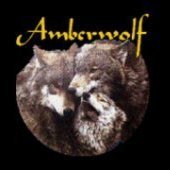-
Posts
121 -
Joined
-
Last visited
Reputation
41 ExcellentRecent Profile Visitors
5,379 profile views
-
Jonathan, I may have encountered a small bug in 2025.11. In Sonar's top menu under Insert>Soft Synths> Manage Layouts> Scan VST Folders. Either the scan isn't taking place or the toast message in not appearing on the screen when you click on Scan VST Folders. In Preferences>Customization>Display I have Show Notifications checked. The manual scan option in Browser>Plug-Ins> Scan VST Folders works fine as does the VST scan in Preferences>File>VST Settings and you get the toast message for both.
-
Promidi, that's an even better idea. I encourage the Bakers to add Delete Picture Cache to the Sonar Tools menu in the next version on Sonar. It would be a great time saver!
-
I've always admired Redford's directing, particularly in what may be his masterpiece, "A River Runs Through It" (1992). More than just an ode to the great outdoors and the art of fly casting, it's a great and very moving exploration of the relationship between a father and his two sons, and the relationship between the two brothers with very different talents and personalities. Highly recommended. Then there's what he accomplished with the Sundance Festival and the support he gave helping many independent filmmakers get their start.
-
aleo started following Sonar 2025.07 Feedback , Automation strangeness , Annoiyng issue with Sonar, all first proyects opened appears collapse!! and 3 others
-
timboaloga, I encountered and reported this problem many months ago; it occurs in both Volume and Pan envelopes and probably any other automation envelope. It was supposed to have been fixed back in the winter, v. 2025.02, but re-appeared in v. 2025.07. Hopefully the bakers will fix it soon. In the meantime, when you encounter it, go to Edit and Undo your attempt to delete any nodes in that portion of the envelope. This should take you back to the point where your envelope was normal. Next, convert all of the jump lines in or near the clip and to the left of the last node followed by a jump line (this would be the last node on the right side of the clip you've shown above) to one of the solid lines (linear or curved), then delete the nodes you want to get rid of and reshape the lines in the envelope the way you want them. It's a nuisance, but my solution will enable you to get the job done until the developers get it fixed.
-
One other related issue: for several months now, users have not been able to prevent the Quick Start screen from appearing after Sonar is initiated regardless of the box in the lower-left corner of the screen not being checked or the box in Preferences>Customization>Display being unchecked for Quick Start. It's a small thing for some users, but it should have been cleared up a long time ago.
-
Noel, I began experiencing the same problem described by Mr. Diaz and others after installing v. 2025.08, build 014 (I believe), and it has continued with builds 033 and 035. It occurs whenever I use any Workspace other than None or when I use a custom workspace I've made. I reported it to Cakewalk support and asked them to explain what the relationship is between Workspaces and the way Quick Start opens a project--no response yet. If I initiate Sonar, close the Quick Start screen, click on File and select a project, it opens exactly as I saved it, regardless of what Workspace I was using when it was saved. But this issue with Quick Start is something new.
-
henkejs, I certainly hope not. I can't tell you if it was integrated into Sonar after 2025.02, but if a number of users/members are unable to find it in versions as recent as 2025.08 then something is wrong. I hope someone on the staff or one of the developers can clear this up. Local Help has always been included in SONAR and CbB and it should remain a part of Sonar. Users/members should not have to download it as an additional feature or product.
-
guys, What you need to download is an executable file, SonarHelp_Documentation_1.0.021.exe . I encountered this same problem with Local Help earlier this year, wrote to support@ cakewalk.com and several days later it appeared under Product Updates. I did this back in February, to integrate it into the paid version of Sonar. Someone on the staff should be able to tell you if this executable file for Local Help has been updated since then. Hope you have success.
-
Sophisticated, yet so inviting!😃
-
I do a lot of composing and editing with MIDI tracks and Instrument tracks and often you have a situation where two tracks have notes of the same or nearly the same color. This presents some confusion when working in the Clips Pane, but much more confusion when you're working with both tracks in PRV. It's easy to solve the problem in Track View using Track Inspector and changing the Note or foreground color in the clips in one of the tracks. Unfortunately, the note color in PRV remains the same. It would be very helpful if a track's note color in the Clips Pane could be synced with track's note color in PRV.
-
Plays, Welcome aboard. I'm a little surprised that no one from the staff has responded to your post (19 hours!). I doubt if your problem with the Quick Start panel is serious enough to require a reinstallation, hopefully correcting it will be fairly simple, but I'm not knowledgeable enough to help you with this aspect of Sonar. Try contacting support@cakewalk.com or going to Support at the Cakewalk website. Hope you have success in solving your problem soon.
-
Noel, I've encountered problems with corruption of both the Time Ruler and automation envelopes that occur whenever the Horizontal Scroll thumb is moved. I believe these problems started occurring with build 084, but they remained after I installed build 109--see attached screenshot of a simple test project. Opening the Tack Inspector or moving the horizontal zoom clears everything up, but corruption recurs as soon as you touch the Horizontal Scroll again. I've sent all the documentation (screenshots, project, files, video, dmp files) I can to the folks at Cakewalk Support, haven't heard back. All the details can be found under Case # 2027551. BTW--heard some really nice jazz guitar playing on your blog.
-
Wookiee, yes and I believe my e-mails with these attachments made it through including copies to Jonathan Sasor. These problems center around Sonar's failure to re-draw things in the Clips Pane correctly after the horizontal scroll thumb has been moved. Build 097 corrected the problem of the Now Time line being messed up, but didn't correct the corruption in the automation envelopes. We are finishing a final mix for an album and rely heavily on drawing and adjusting the volume and pan envelopes in our tracks. The bugs you see in my screenshot interfere with our progress. I don't think it's related to our hardware; since April we've been using a state-of-the-art PC running Win. 11 and optimized for running Sonar.
-
As you can see in the attached screenshot, several of the problems that occurred in the Clips Pane with v. 2025.07 build 084 remain in build 097. Track 1 demonstrates the corruption that occurs in automation envelopes whenever you move the horizontal scroller—broken or irregular jump lines, irregular straight lines and curved envelopes. This can be cleared up by opening Track Inspector or by moving the vertical scroll thumb. The corruption in the envelope in Track 2 is an old problem that goes back, I believe, as far as v. 2024.12. It was fixed for version 2025.06, but has returned with build 097. It occurs consistently when a clip with an envelope is moved to the left and the 2nd node from the last is deleted. I've reported this problem several times both on this forum and to Support. There was no signal passing through Sonar when this screenshot was taken so there should be no green bars in either the Master or Metronome bus, yet they are there, frozen (?). I’ve sent several problem descriptions along with screenshots and project files to Cakewalk Support and have also tried to send videos and dmp files (build 097 has crashed on me twice) as requested. Some of these files may have been too large and I don’t have an account with Drop Box. I have not heard back from anyone in Cakewalk Support for over a week. Can we please get these problems corrected by the next Sonar update?
-
Mark, thanks for responding. I sent a project file to Lois at Support earlier today along with a new screenshot. Will send copy to Jonathan. BTW, the second time I initiated Sonar after my upgrade to build 084 it crashed (my first crash with Sonar). I have the mini-dump file, but will need to use something like Drop Box and I don't have an account with them yet.







.thumb.png.4d196072342a981b7e3d496b39a58b89.png)

.thumb.png.3ee3e37425773b557a91dba476e79020.png)
.thumb.png.918001521b561046caf8149d73d513dd.png)
